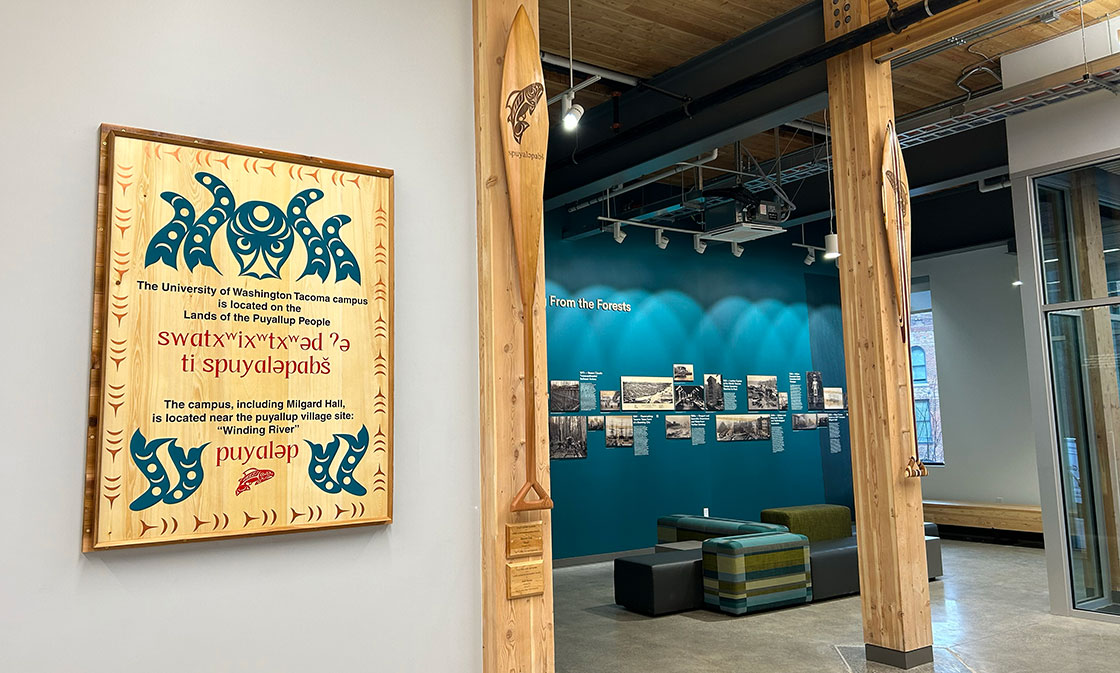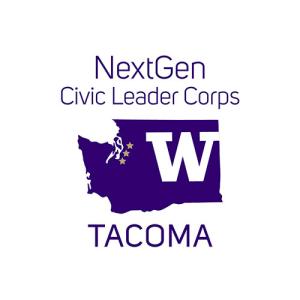
New permanent display explores history of timber, honors tribal connection
A new display and permanent land acknowledgement in Milgard Hall celebrate our partnership with the Puyallup Tribe.
A group of campus and community leaders came together on April 10 to celebrate a new display on the history of timber in Tacoma and a permanent Puyallup Tribe Land Acknowledgment on the ground floor of Milgard Hall.
Professor (and former Chancellor) Mark Pagano led the effort to construct the display. He noted that most buildings on campus have a story — they were once warehouses that supplied the gold rush or hotels for the terminus of the railroad. The site for Milgard Hall spent most of its modern life as an empty piece of land for storing coal or cars and he wanted it to have a story, too.
Since Milgard Hall is partially constructed using a new environmentally sustainable wood called Cross Laminated Timber (CLT), telling the story or timber use in the area made sense.
Pagano worked with local historian Michael Sullivan and Puyallup Tribe Cultural Director Connie McCloud to create the story. “She [McCloud} said if you’re going to tell the story, you have to tell the whole story,” said Pagano.
The display features maps, photos and illustrations of how timber was and has been used in the area. The Land Acknowledgment hangs on an adjoining wall. Two paddles affixed to columns near the entrance to the display were carved by “Muck” Michael Hall who also constructed the Land Acknowledgment. Another artist, Jack George, did the painting and artwork for the Land Acknowledgment.
Chancellor Sheila Edwards Lange acknowledged the significance of the Tribe’s involvement in the project and the permanent land acknowledgement. “We’re acknowledging the past, but we’re also acknowledging the present and the future for what we would like to see here at our university," she said.
During her remarks, McCloud talked about the relationship between the Puyallup Tribe and cedar trees. “Our people knew and understood how to move a great cedar tree,” she said. “They also knew that the cedar tree repelled rain, it didn’t rot and that’s one of the reasons why they built the longhouses out of the cedar tree planks.”
The event, presented jointly by the Office of Community Partnerships and the Office of Equity & Inclusion, included a blessing by members of the Puyallup Tribe. You can watch a recording of the event here.
The land acknowledgment and the two paddles in the display were carved by tribal artist “Muck” Michael Hall. In the video below, he talks about the history and process of making the paddles and the meaning they hold.



